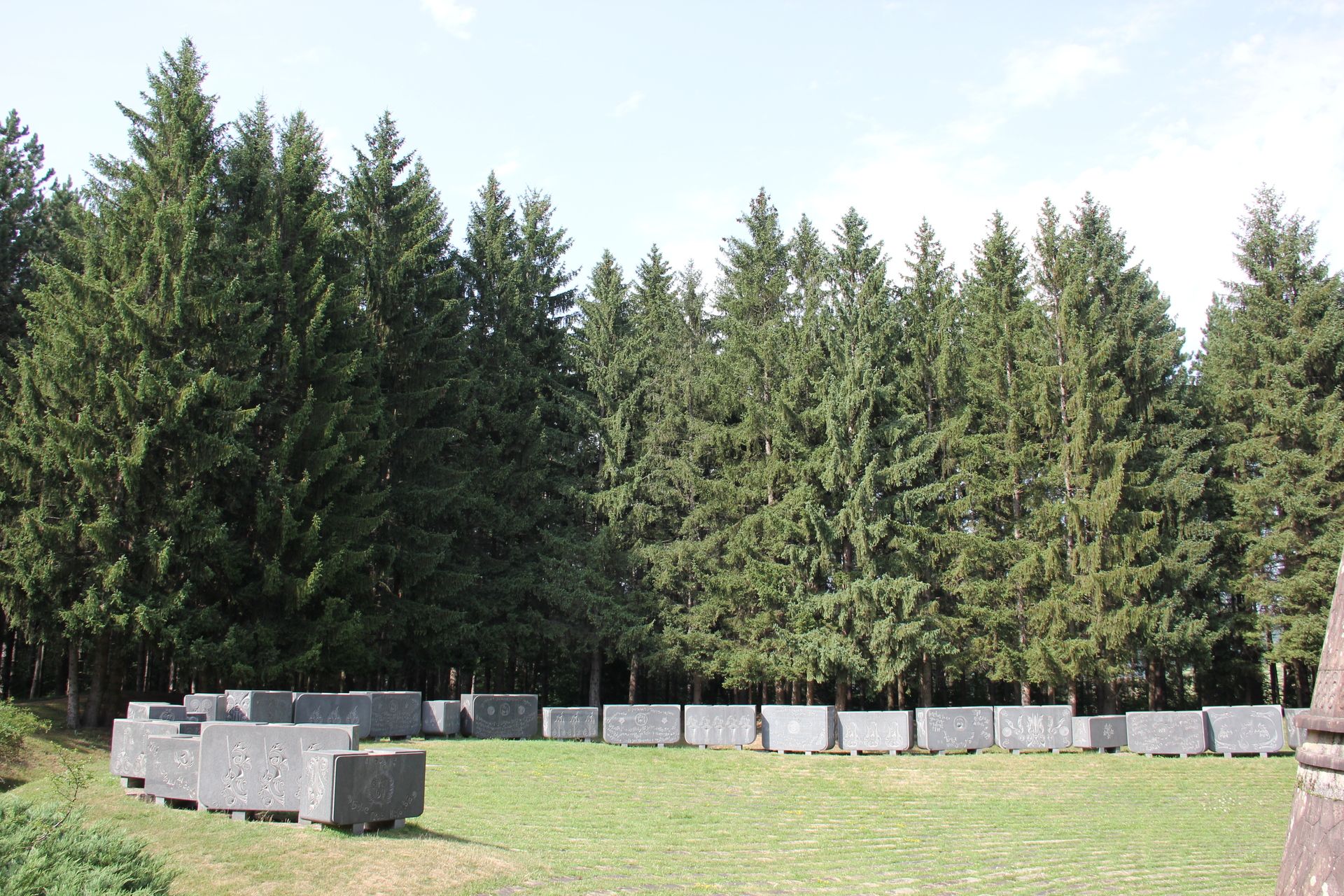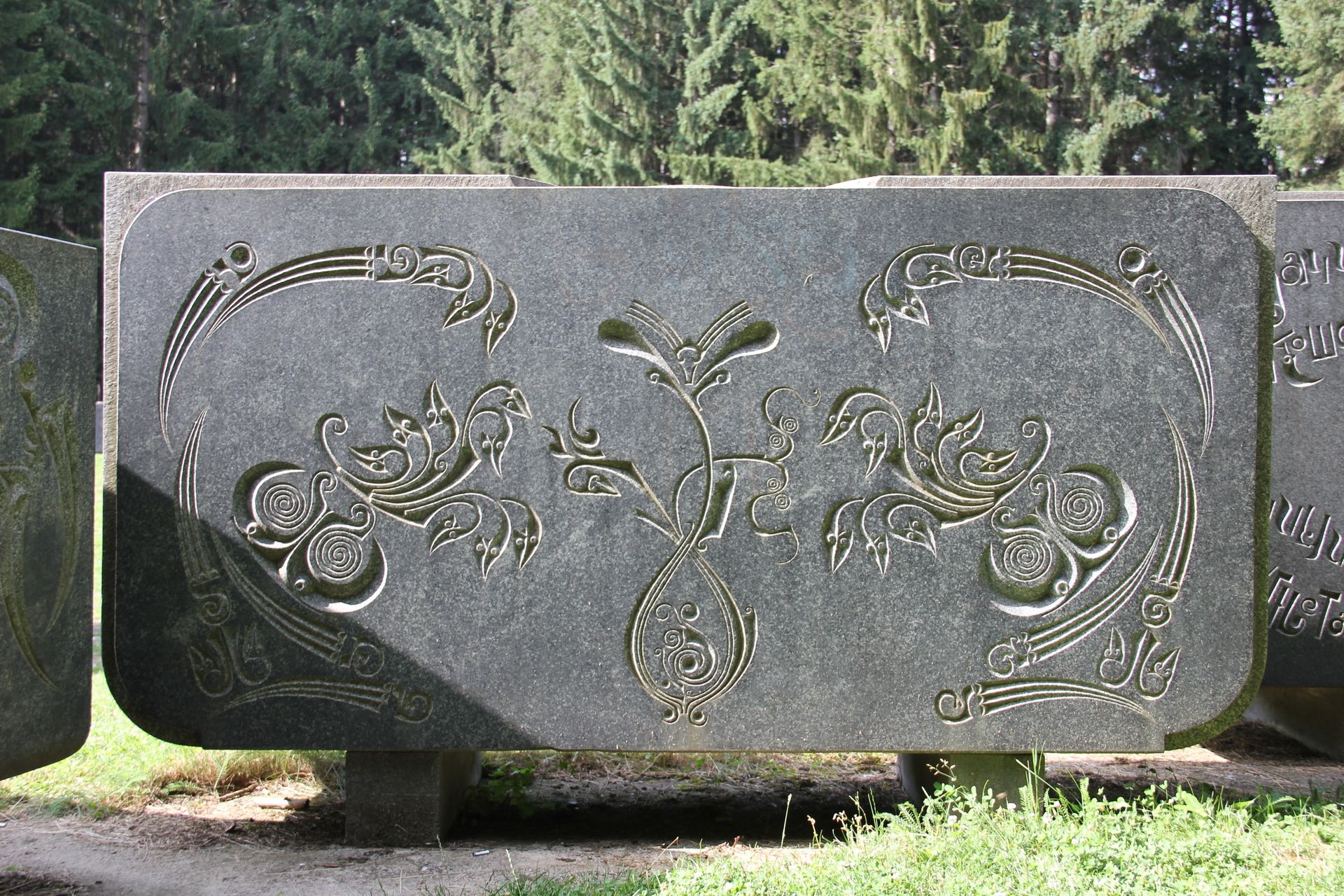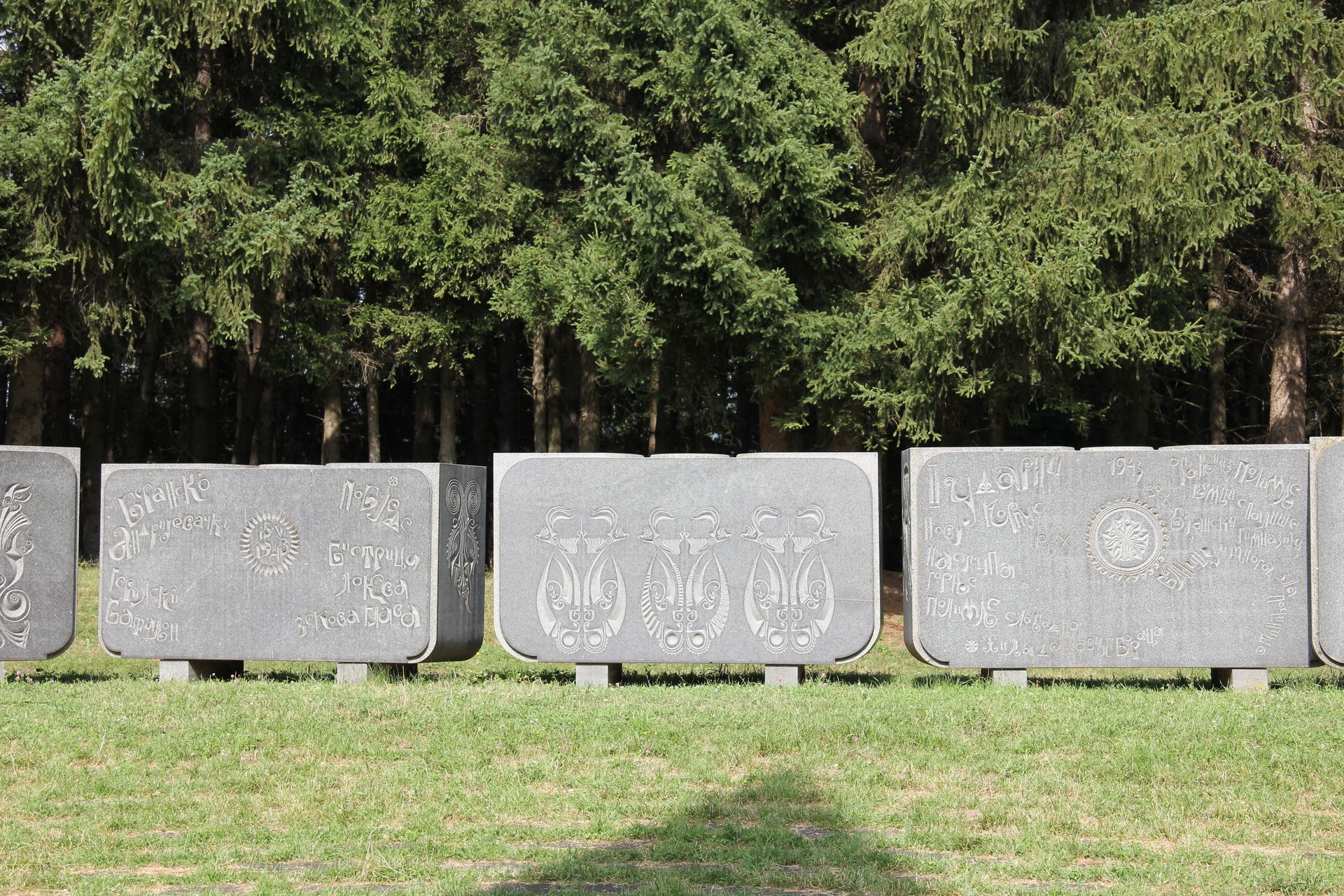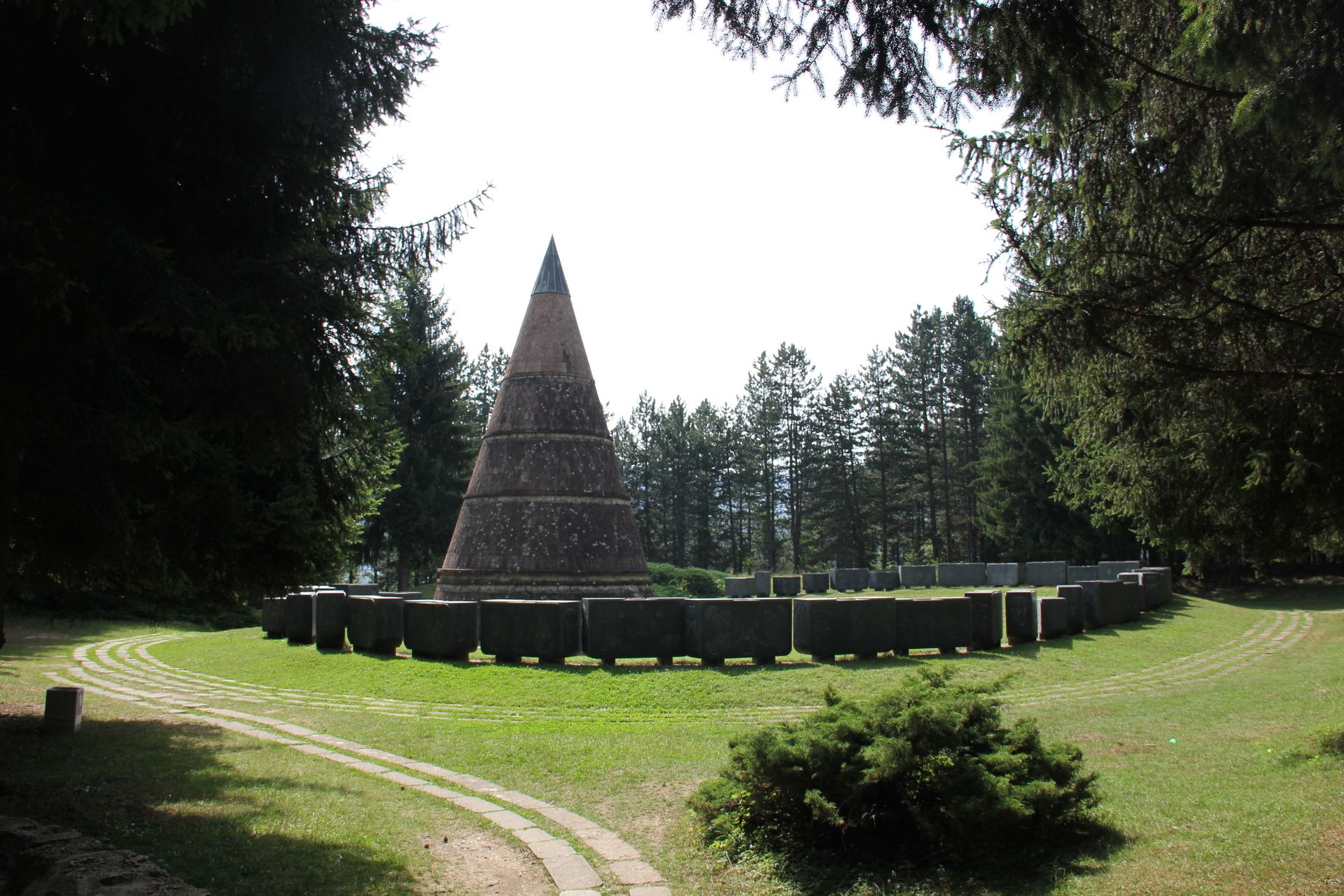You know that feeling when you stumble onto something extraordinary, but you can't quite put your finger on why it hits so hard?
I had that moment last summer. I was hiking up this hill in Berane—honestly, I was there for research, feeling pretty academic about the whole thing. Just another monument to document, right?
But then I crested the ridge and stopped dead.
Forty massive granite blocks stood there like some ancient council of elders, each one bulky, dark like midnight, carved with thousands of intricate symbols and letters.
They weren't arranged randomly, they formed this protective circle around a soaring red sandstone cone that pierced the sky.
Here's the thing that got me: I completely forgot about the main monument.
For twenty minutes, I wandered between these granite guardians, running my fingers over muskets carved next to traditional jewelry, reading battle stories etched beside folk songs. Each block was like opening a different chapter of this region's cultural DNA.
And that's when it hit me. This wasn't decoration. This was defense.
Not against vandals or weather, but against something far more dangerous: the slow, insidious erasure of cultural memory itself.
Most heritage architects spend all their energy making the main building look "authentic." They pile on period details, source historical materials, obsess over perfect restoration.
The masters do something completely different.
They design guardian systems.
Because here's what they know that others don't.
Your heritage project is under attack every single day.
Every tradition that goes unspoken, every craft technique that dies with its last practitioner, every story that gets buried under generic development—that's cultural territory lost forever.
And no single building, no matter how perfectly designed, can defend against that kind of assault.
You need guardians.
Guardian Element Strategy
Great architects don't just design buildings, they design defense systems for cultural memory. And the most powerful weapon in their arsenal isn't the main structure at all.
It's what I call Guardian Elements—physical components specifically designed to protect, preserve, and transmit cultural knowledge.
Here's how it works:
Step 1: Identify What Needs Defending
(Not all cultural elements are under equal threat. You need to diagnose what's most vulnerable)
Step 2: Design Physical Guardians
(These aren't decorations, they're repositories.)
Step 3: Program the Defense
(Each guardian element needs specific strategy.)
Jasikovac Guardian System
In 1975, architect Bogdan Bogdanović faced an challenge of creating a monument of freedom that speaks to everyone, all in a region scarred by centuries of conflict.
His solution wasn't to make the central monument neutral.
Instead, he created:
40 blocks of polished dark Herzegovinian granite

Fig. 1. Defence system. Author: Radović David.
250 square meters of carved ornamental surface

Fig. 2 Carvings. Author: Radović David.
10,000 letters inscribed with local stories

Fig. 3. Stories. Author: Radović David.
18-meter central monument protected at the center

Fig. 4. Jasikovac memorial complex. Author: Radović David.
Each granite block containes carefully chosen elements:
Military heritage: Muskets, sabers, pistols from local battles
Folk traditions: Traditional hats, embroidery patterns, regional dress
Cultural artifacts: Jewelry, bags, musical instruments
Local stories: Battle accounts, resistance narratives, community memories
By placing the cultural defense in the guardian blocks rather than the central monument, Bogdanović created something remarkable: a heritage project that got stronger under attack.
When political winds changed, the central cone remained symbolically neutral. But the guardian blocks? They became an encyclopedia of regional identity that no ideology could erase.
The monument wasn't just commemorating freedom, it was actively defending the cultural knowledge that makes freedom meaningful.
Most heritage projects try to put all their cultural weight on the main building. By now, you should bare in mind that distribution is protection.
By spreading cultural knowledge across multiple guardian elements, you create engagement and resilience that no single structure can match.
So, think of your next project and approach it like it’s not just a building, but a cultural defense system.
When You’re Ready
Struggling to identify what heritage elements need defending in your project? I've helped 100+ professionals navigate exactly these challenges. If you're ready to move beyond preservation into strategic heritage defense, let's talk.
→ Send an e-mail to: [email protected]
~ David
Future Heritage is a newsletter on the critical intersections of architecture,
culture, and philosophy.
Spread the word — share with your own network.
Reach out for collaboration.
